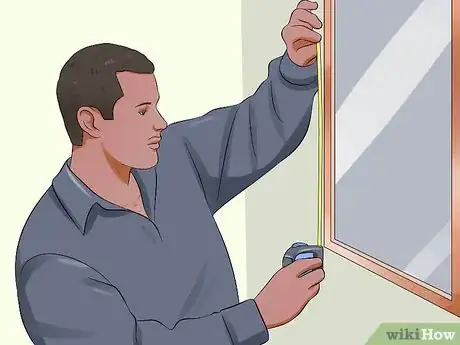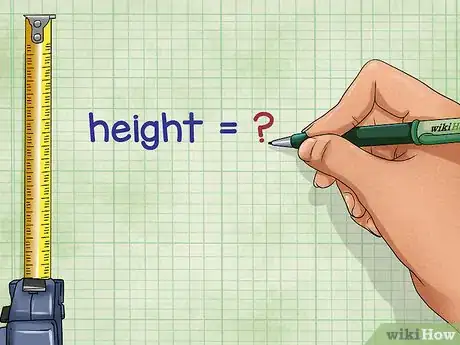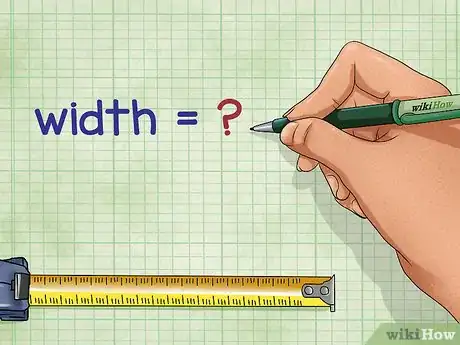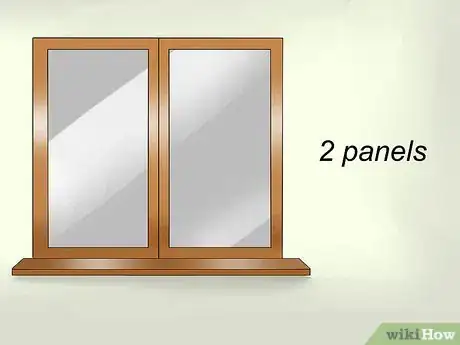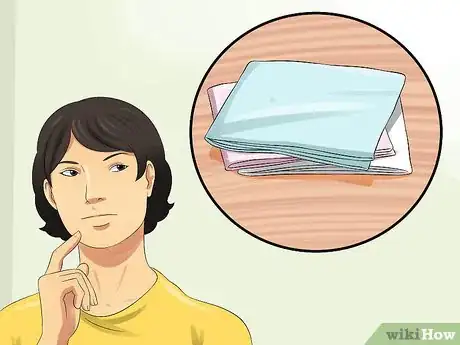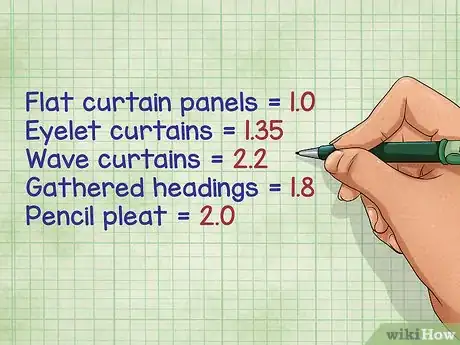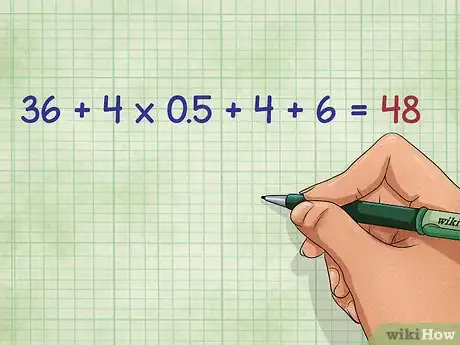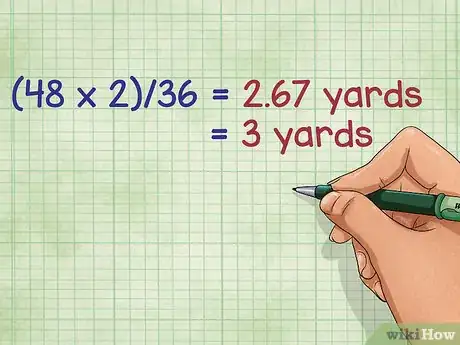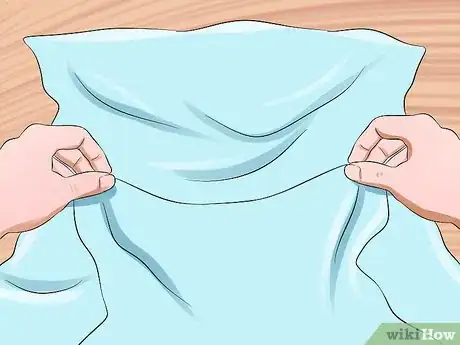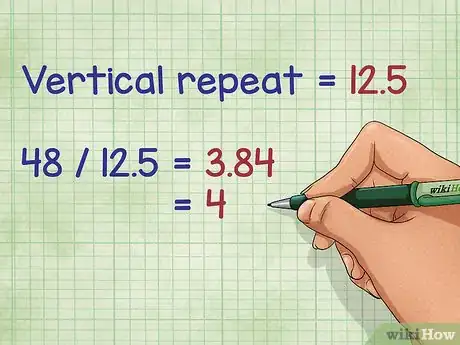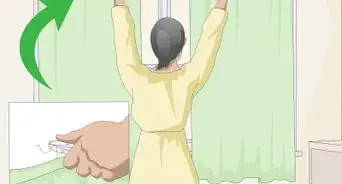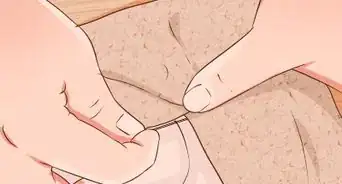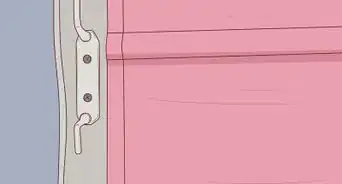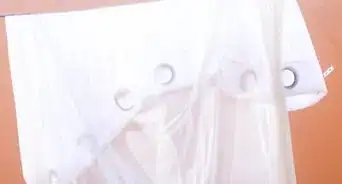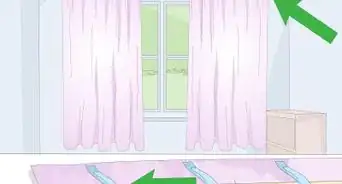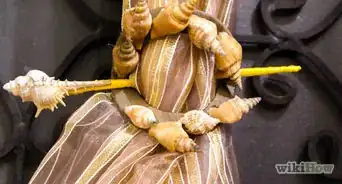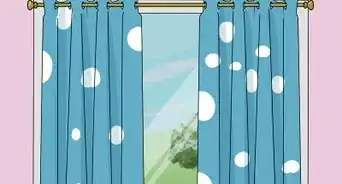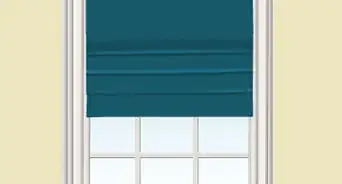This article was co-authored by Donna Serino. Donna Serino is a Dry Cleaning and Alterations Specialist and the Marketing Director for Hallak Cleaners, based in Manhattan, New York and Hackensack, New Jersey. She has expertise in tailoring and alterations, couture and casual wear, designer handbag cleaning, and suede, leather, and furs care. Donna and Hallak Cleaners are part of the National Cleaner’s Association, Drycleaning and Laundry Institute, and Leading Cleaners Internationale.
This article has been viewed 183,214 times.
Store-bought curtains are often pricy and come in limited options. Meanwhile, curtains are relatively easy for a beginner to sew. With thousands of different fabrics to choose from, you may want to make your own custom curtains rather than pay a premium price for ones that don't perfectly match your decor. Of course, the first step in any sewing project is knowing how much fabric you need to buy.
Steps
Taking Measurements
-
1Take accurate measurements. Windows come in many different sizes. Because of this, there is no "standard" length and height. Use a metal tape measure to measure from one side of your window to the other. This is the window's width. Next, measure the window from top to bottom. This is its height.
-
2Determine the height of your curtains. You will likely need to add a few inches to your window's measurements, but this varies based on a few factors:
- In general, curtains extend four inches below the window. If you would like that style of curtain, simply add four inches to the finished height. However, if you would like floor-length curtains, you must measure the distance from the window to the floor. Subtract one inch from this number and add the difference to the finished height.
- If you are mounting curtains inside the window frame, measure down to ½ inch above the sill.
Advertisement -
3Determine the final width. If you plan to mount the rod inside the window frame, you do not need to add any measurements. If you are mounting the rod outside the window frame, select a location and adjust the width and height to match.
- How far on either side do you wish your curtains to extend? Curtains generally go about four inches beyond the window on either side, meaning you will need to add eight inches in total to the finished width. However, if you want your curtains to match the curtain rod's length, measure that to get the finished width instead.[1] [2]
-
4Decide on the number of panels you'd prefer. If you have a fairly wide window, it's practical to make curtains that are two or more panels to cover the finished width instead of one long continuous piece of fabric. Divide the finished width by this number. Ideally, your chosen fabric will have a cut width equal to your desired panel widths. You can work with a shorter cut, but you will have extra sewing and cutting to do.[3]
Determining Your Fabric Needs
-
1Take necessary extra fabric into account. In addition to the size of your final curtains, you will need some additional fabric for other aspects like hems and headers. How much you add will be determined by the style of curtain you'd like to make.
- Will your curtains have a decorative header at the top? You will need to add double the length of this header to the final height of your fabric.
- If you plan on hemming your fabric, add four times the length of the hem to the height and width needed. For example, a standard one-inch hem would add four inches to each length.
- Keep in mind that a wider hem looks nicer.
-
2Figure out your fullness ratio. Unless you want flat curtain panels, you will need a lot of extra fabric to account for pleats, waves, or gathered headings. Each curtain style has its own "fullness ratio," which you will need to multiply your finished width by. Fullness ratios for common curtain styles include:
- Flat curtain panels = 1.0
- Eyelet curtains = 1.35
- Wave curtains = 2.2
- Gathered headings = 1.8
- Pencil pleat = 2.0[4]
-
3Calculate your final width and height. By now you have a lot of different numbers to work with but may be unsure of how to put them all together. Use a pencil and paper to write out your calculations.
- For example, let's say you're working with a 48"-wide, 36"-tall window with a curtain rod 6" above. You want standard 4" overlays (both vertical and horizontal), 1/2" hems, and a fullness ratio of 1.8 for a gathered heading style. You would like your curtains to be broken up into two panels.
- Your final estimated width would be: The width (48") plus twice the overlay (4"). You would then divide this length (56") by the number of panels (2). Next, add four times the hem (0.5"). Finally, multiply this final number (30") by the fullness ratio (1.8), yielding a width of 54". This can also be expressed with the equation 1.8 x ((48 + 2 x 4)/2 + 4 x 0.5) = 54.
- Your final estimated height would be a much simpler: Just add the height of the window (36") to four times the hem (0.5") along with the overlay (4") and distance to the rod (6"). In this example, you would need to buy 48 inches (120 cm) of fabric. This can also be expressed as the equation 36 + 4 x 0.5 + 4 + 6 = 48.
-
4Calculate your yardage. Fabric is usually sold by the whole yard. To figure out how many yards you'll need to buy, multiply your final height by the number of panels needed. Next, divide this number by 36 (there are 36 inches in a yard). Round up to the nearest whole yard.
- Using the previous example: Take the final height (48") and multiply it by the number of panels needed (2). Divide this length (96") by the number of inches in a yard (36"), giving you a minimum yardage of 2.67. The equation used here would be (48 x 2)/36 = 2.67 yards (2.44 m). This number rounded up would be 3 total yards.
-
5Pick your fabric. Fabric is typically sold in varying widths. To make things easier, try to pick a fabric with a width close to the final panel width of your curtains. It's perfectly fine to use a fabric with a width a few inches longer than the final width, but definitely don't pick one that's shorter.
-
6Account for pattern repeats. If you're making curtains with multiple panels and your chosen fabric has a pattern, you will want to make sure the pattern lines up perfectly between panels. To do this, you will need to modify your calculations slightly. Start by determining the vertical repeat of the pattern. This is typically listed on the fabric's product information. Divide your final height by the vertical repeat. If the resulting quotient isn't a whole number, you'll need to adjust your yardage.
- Using the previous example with a vertical repeat of 12.5 inches (31.8 cm): Divide the final height (48") by the vertical repeat (12.5), which is 3.84. This number rounded up would be 4.
- You will need to calculate your yardage again using 4 times the vertical repeat (or 50") in place of the final length.
- The number yards you'll need to buy would be: (50 x 2)/36 or 2.78 yards. Rounded up, this number is 3 yards. Luckily, in this instance you would be paying for the same amount of fabric as you would if it wasn't patterned.[5]
- If you skip this step, you will end up with curtains with patterns that don't match up. If that's the look you want, then go for it. However, in general, patterned curtains that are out of synch look sloppy and unprofessional.
-
7Reinforce the top of the curtain if necessary. Generally, you'll want to reinforce the top of the curtain with an extra layer of fabric or interfacing. If you have a narrow rod to insert through a fabric tunnel at the top of the curtain, you may skip this step.
Community Q&A
-
QuestionHow wide should a gathered valance be for a 33" window?
 Community AnswerIf you want a gather with a regular amount of fabric, use 1.5 times the width. For a more full-gathered look, double the amount of fabric to 66 inches.
Community AnswerIf you want a gather with a regular amount of fabric, use 1.5 times the width. For a more full-gathered look, double the amount of fabric to 66 inches. -
QuestionHow many widths of fabric will I need for a curtain 62 inches wide?
 Community AnswerIt depends how full you want your curtains to be. Generally, 1.5 times the width works fine. However, if you prefer it to be more full, you can double the width -- 124 inches wide. Allow for seam allowances, too.
Community AnswerIt depends how full you want your curtains to be. Generally, 1.5 times the width works fine. However, if you prefer it to be more full, you can double the width -- 124 inches wide. Allow for seam allowances, too.
References
- ↑ http://www.sew4home.com/tips-resources/sewing-tips-tricks/how-measure-curtains
- ↑ http://www.joann.com/on/demandware.static/Sites-JoAnn-Site/Sites-joann-project-catalog/-/images/hi-res/project/pdf/P488313.pdf
- ↑ http://www.thesewingdirectory.co.uk/measuring-windows-and-fabric-calculations
- ↑ http://www.linenfabrics.co.uk/curtain-width-fullness-cm-64
- ↑ http://www.addicted2decorating.com/diy-basics-figuring-fabric-yardage-for-draperies-or-curtains-with-patterned-fabric.html
- ↑ http://www.joann.com/on/demandware.static/Sites-JoAnn-Site/Sites-joann-project-catalog/-/images/hi-res/project/pdf/P488313.pdf
About This Article
To measure fabric for curtains, start by measuring the width and height of your window. If you want floor length curtains, measure from the bottom of the window to the floor, subtract 1 inch, and add that number to the height of the window to get the height of the fabric you should use. Then, add 8 inches to the width of the window to get the total width you'll need for your fabric. Keep in mind that if you plan on hemming the fabric, you'll want to add 4 times the length of the hem to both the width and the height. To learn how to account for pleats and waves, scroll down!
